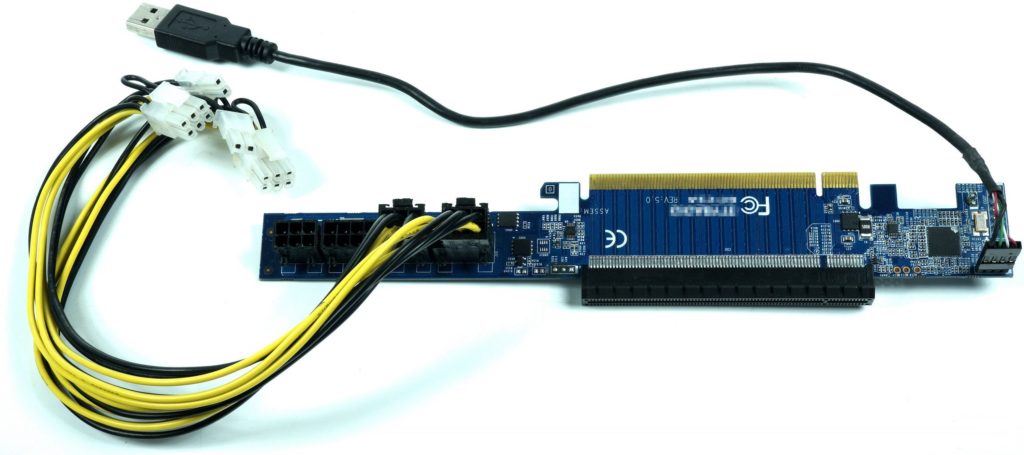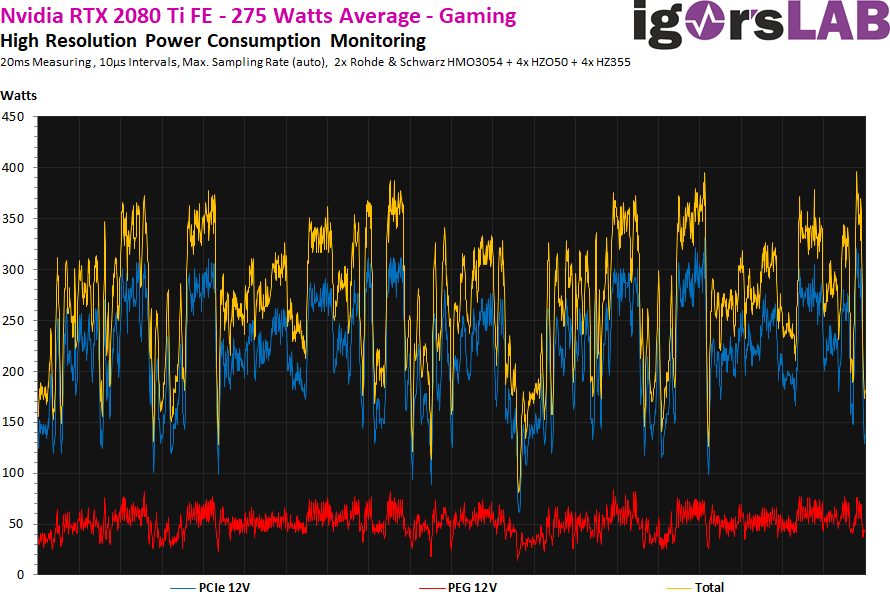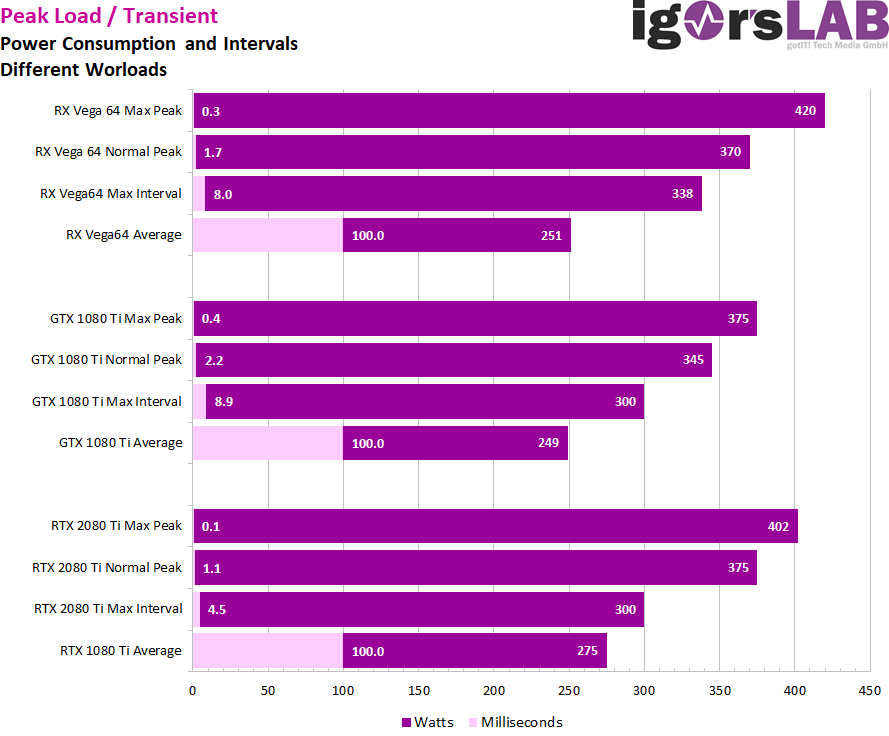What are the limits?
As great as PCAT is for measurement and data acquisition – everything that makes up my site here, PCAT cannot realize either. And that’s just as well, otherwise I would have become obsolete over night. But what works well: PCAT is an ideal solution because it is very convenient to use and can complement my complex measurements or helps to shorten many ways. For all evaluations of the previous page, this is of course cuddling in the comfort zone par excellence.
Detailed measurements at maximum play load? You can certainly reach the 400 watt limit with a GeForce RTX 2080 Ti, but only in the microsecond range, where PCAT is of course no help anymore. One recognizes with risen average power consumption that there are also still spikes up to 400 Watts, but the regulation precipitates very much more filigree. The 375 watts over one millisecond are the maximum here and you can also see that Turing regulates more often than early Pascal, but much more finely graded. Unfortunately PCAT cannot measure this at all. But let’s wait for Ampere, it will come soon! Then there is PCAT for the averages and my oscillographs for the finest work.
The stress test causes a very interesting picture. This is because the length of the real load intervals is halved, even if you have to wait for a single millisecond for approx. 330 Watt is reached, it is then an average of approx. 300 watts. Then the card regulates for approx. 0.25 ms completely for the time being. The currents are also much more relaxed and you can reach a maximum of just 28 amps. This is now once again clearly below what the GeForce GTX 1080 Ti delivered at the time and at the same level as what an RX Vega can achieve for a short time.
Modern switching power supplies should not have any problems with the flowing currents generated by graphics cards. I could not measure really sensationally high currents on any single card and in any of the most varied load situations. Spikes up to approx. 10 milliseconds are available, no question about it, because this is in the nature of things, because demanding games also cause very different load changes. If you would scale down to the nanosecond range, then peaks of up to 50 amperes are also conceivable, but if an OCP or OPP then already triggers, the circuit is messed up and you don’t have to look for the blame with the graphics cards.
What I would advise, however, reserves or not, is an unemotional and in practice also clearly differentiated consideration of the possible power consumption or the flow of streams on the individual rails. To take pure TBP (Typical Board Power), as measured by PCAT, as the basis for a power supply calculation would be rather naive and it suddenly becomes apparent why graphics card manufacturers often quote much higher values. This is not a job creation measure for the power supply industry, but pure caution.
Without a really detailed review in this area, it is of course very difficult to estimate where the power peaks are and how long the intervals between the peaks are. However, the inclusion of transients is essential for safe operation, because if the manufacturers of power supplies calculate one with a pointed pin, it is the expensive capacitors. In the following overview I have summarized some values that caught my eye during all the measurements:
The very short load peaks can be safely put aside and you should really only think about values that are above one or two milliseconds. By the way, not only because of the possible disconnection of the power supply by a protective mechanism, but also because of its durability. The more hectically such a graphics accelerator sucks on the power supply unit, the faster the secondary capacitors get into the area of care insurance. Anyone who saves in the end is wrongly advised.
Anyone who calculates close to the edge and hopes that it will somehow work out has actually already lost. So pi times thumb, 50 to 100 watt reserve can actually never hurt. The short-term power consumption of current graphics cards is sometimes considerably higher than the values given as an average or what chip manufacturers call typical board power. These values are average values over a rather large interval. Depending on the quality of the secondary side of a power supply unit, the short-term load (1 to 10 ms) can be significantly higher.

Summary and conclusion
My previous, mobile version of a riser board (picture above) has also become obsolete with PCAT. PCAT cannot replace the large measurement setup with MCU-based 10-channel monitoring of the entire system with graphics card and motherboard (including split rails on the motherboard), and the expensive oscilloscope solution remains as it is. But for the application-related measurements together with the low-level acquisition of the render times PCAT is ideal and hardly to be missed, because it is handy and comfortable to use. Not to mention the time saved, which is terrific.
This leaves me with only one positive conclusion, the teething troubles of the FrameView software have been eliminated. PCAT is for everyone who doesn’t want to deal with power consumption as intensively as I do, and who doesn’t want to spend the effort of building their own, e.g. with Tinkerforge modules, actually THE ideal tool par excellence. With this, all the socket measurements have actually become completely obsolete, finally. it took me almost 8 years with all the measurements to reach the current status with now three different measurement setups. With PCAT I could have shortened a lot of things. Well, although, handicrafts and learning in the process are also fun.




































Kommentieren